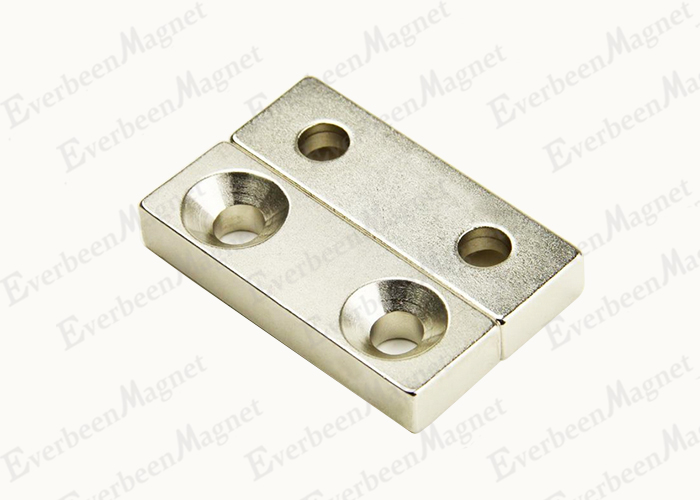NdFeB magnets are currently widely used in industrial aerospace, electronics, electromechanical, instrumentation, medical and other ranges. Moreover, the use of non-technical categories is becoming more and more common, such as adsorption magnets, toys, jewelry, etc. Sintered NdFeB magnets have good strong magnetic properties, and the more common ones are permanent magnet motors, speakers, magnetic separators, computer disk drives, magnetic resonance imaging equipment and instruments.
NdFeB magnet surface disposal process: 1, phosphine; 2. Inorganic salt passivation; 3. Electroplating; 4. Electrophoresis; 5. Vacuum accumulation.
The lack of NdFeB magnets is that their temperature performance is not good, the magnetic loss is large at high temperatures, and the high operating temperature is low. It is generally about 80 degrees Celsius, and the high working temperature of the magnet after special disposal can reach 200 degrees Celsius. Because the data contains a large amount of neodymium and iron, easy corrosion is also a major weakness. Therefore, NdFeB magnets must be treated with surface coating. It can be electroplated with nickel (Ni), zinc (Zn), gold (Au), chromium (Cr), epoxy resin (Epoxy) and so on.
Because the main raw material of NdFeB magnet is very cheap, the storage amount of neodymium is 10-16 times more than that of samarium, so its price is also much lower than that of samarium cobalt magnet.
NdFeB magnets have better mechanical properties than samarium-cobalt magnets and aluminum-nickel-cobalt magnets, making them easier to cut and drill and complex shape processing.
NdFeB magnet consumption process: ingredients ----> melting----> milling----> molding----> sintering ----> testing----> machining----> electroplating----> magnetization ----> inspection ----> packaging.
